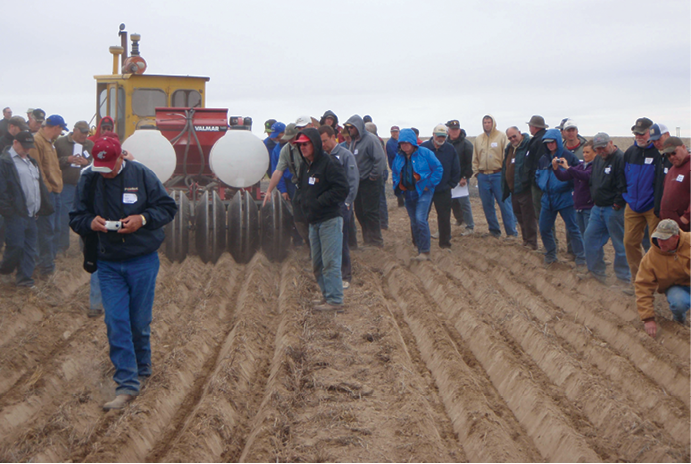No-Till Farmer
Get full access NOW to the most comprehensive, powerful and easy-to-use online resource for no-tillage practices. Just one good idea will pay for your subscription hundreds of times over.

New technology and setups are emerging that could solve decades-old problems with deep-furrow drills and encourage more no-till on millions of dryland acres in the Pacific Northwest.
After 2 years of testing on prototype drills, researchers and farmers found that coulters, spider-wheel row cleaners, larger packer wheels, wider row spacings and more clearance under drill frames holds promise to reduce plugging and improve seeding efficiency.
While the goal in east-central Washington and north-central Oregon is to leave more than 30% residue cover on the surface, antiquated drill designs cannot handle copious amounts of wheat residue.
“Farmers have drills that can’t pass through high levels of residue in tilled fallow, so they’re doing more tillage than necessary because they can’t afford drill-plugging problems during the short planting window,” says Bill Schillinger, professor and director of Washington State University’s Dryland Research Station in Lind, Wash., who is leading the 3-year research project.
Winter-wheat farming in much of the Pacific Northwest has evolved from repeated passes with high-disturbance tillage implements to today’s conservation-tillage management, according to historical information from the Washington Grain Commission.
The 2-year, tillage-based winter-wheat/summer-fallow rotation is the dominant cropping system in the region of the Pacific Northwest that receives less than 12 inches of annual precipitation.
No-till fallow is ideal for control of wind erosion but is not widely practiced because of seed-zone soil drying during the summer, whereas adequate seed-zone water for germination and emergence of deep-sown winter wheat can generally be retained with tilled fallow, Schillinger…